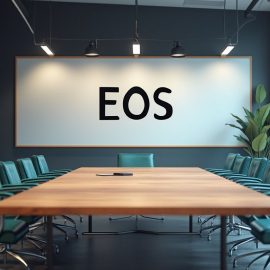

This article is an excerpt from the Shortform book guide to "Fix This Next" by Mike Michalowicz. Shortform has the world's best summaries and analyses of books you should be reading.
Like this article? Sign up for a free trial here.
What does it mean to have a community in business? How can having a community benefit your company?
Having a community in business means having customers who value your company for its mission and have a meaningful connection with your purpose. Knowing how to build a community like this is important for any business owner.
Discover how and why to build a community around your business with these tips.
Why Create a Community?
Creating a community in business means finding customers who appreciate your company’s mission and encourage your company to uphold it when you’re not there to do so. Connecting your company to a mission inspires loyalty. Your goal is to encourage that loyalty until your customers will promote your product and protest if your company deviates from its mission. This creates a virtuous cycle: Your community encourages the company to uphold its mission, the company continues to create positive change, and your community remains loyal to the company. In contrast, a less-loyal community will simply stop supporting the company if it doesn’t uphold its mission.
How to Create a Community in Business
To create a community, develop imagery, narratives, and spaces that are unique to your company and customers. These elements separate your company from your competitors, encouraging your customer base to be loyal to you. These elements also provide a connection with your customers, encouraging them to participate in the community.
Returning to our logging company example, your mission is to provide high-quality products while minimizing harm to the environment. You make your logo a tree stump with a sapling growing out of it, unique imagery that shows your commitment to both providing your product and fostering new growth. Your unique narrative is that a company that inevitably harms the environment can also protect it if you put in the effort. You foster unique forums online, giving people a place to discuss their experiences of, advice on, and ideas regarding buying wood-based products sustainably and mitigating the harm caused by logging.
| How to Build a Community Community building experts explain that there are three stages of building a successful community: Members are attracted to the community’s sense of identity, they participate in the community, and they’re rewarded for that participation. That reward further encourages their sense of identity, creating a virtuous cycle. The advice to develop unique imagery, narratives, and spaces aligns with the first stage of this cycle. These elements show off the community’s identity, letting people easily understand and relate to it and thus encouraging them to join. Community-building experts offer a couple of tips for defining your communal identity (and thus your imagery, narratives, and spaces): 1. Be specific. No community can serve everyone, and the more specific your group identity is, the more attracted people who relate to that identity are likely to be. 2. Reach out to isolated groups. When people feel isolated, they crave community. If you reach out to them, they’ll be more likely to enthusiastically join the community. Encouraging participation is important because the more people engage with the community, the more they’ll relate to the group identity. This is likely why customers would be willing to promote your product and uphold the company’s mission: They identify so strongly with the community that supporting the company’s identity is an extension of supporting their own. When rewarding people for their participation in the community, use intrinsic rewards (like a sense of status) as well as extrinsic rewards (like gifts). Customers who gain intrinsic rewards are more engaged and will probably remain in the community even if the extrinsic rewards stop. For example, if you grant the title “Superstar” to people who attend 10 community events, those people will have a sense of higher status, encouraging them to keep participating. |

———End of Preview———
Like what you just read? Read the rest of the world's best book summary and analysis of Mike Michalowicz's "Fix This Next" at Shortform.
Here's what you'll find in our full Fix This Next summary:
- Why many entrepreneurs struggle to fulfill their companies' requirements
- How to use the Business Hierarchy of Needs to prioritize company problems
- How to get to root problems rather than applying Band-Aid solutions







It’s inspiring to read about the importance of community in business. One book that aligns with this philosophy and has influenced my approach to leadership is “Extreme Ownership” by Jocko Willink & Leif Babin (available at https://echelonfront.com/books/). I once led a team where fostering a sense of community was crucial. By encouraging open communication and collaboration, we created a supportive environment where everyone felt valued and motivated. This experience highlighted the transformative impact of community in driving business success and employee satisfaction.